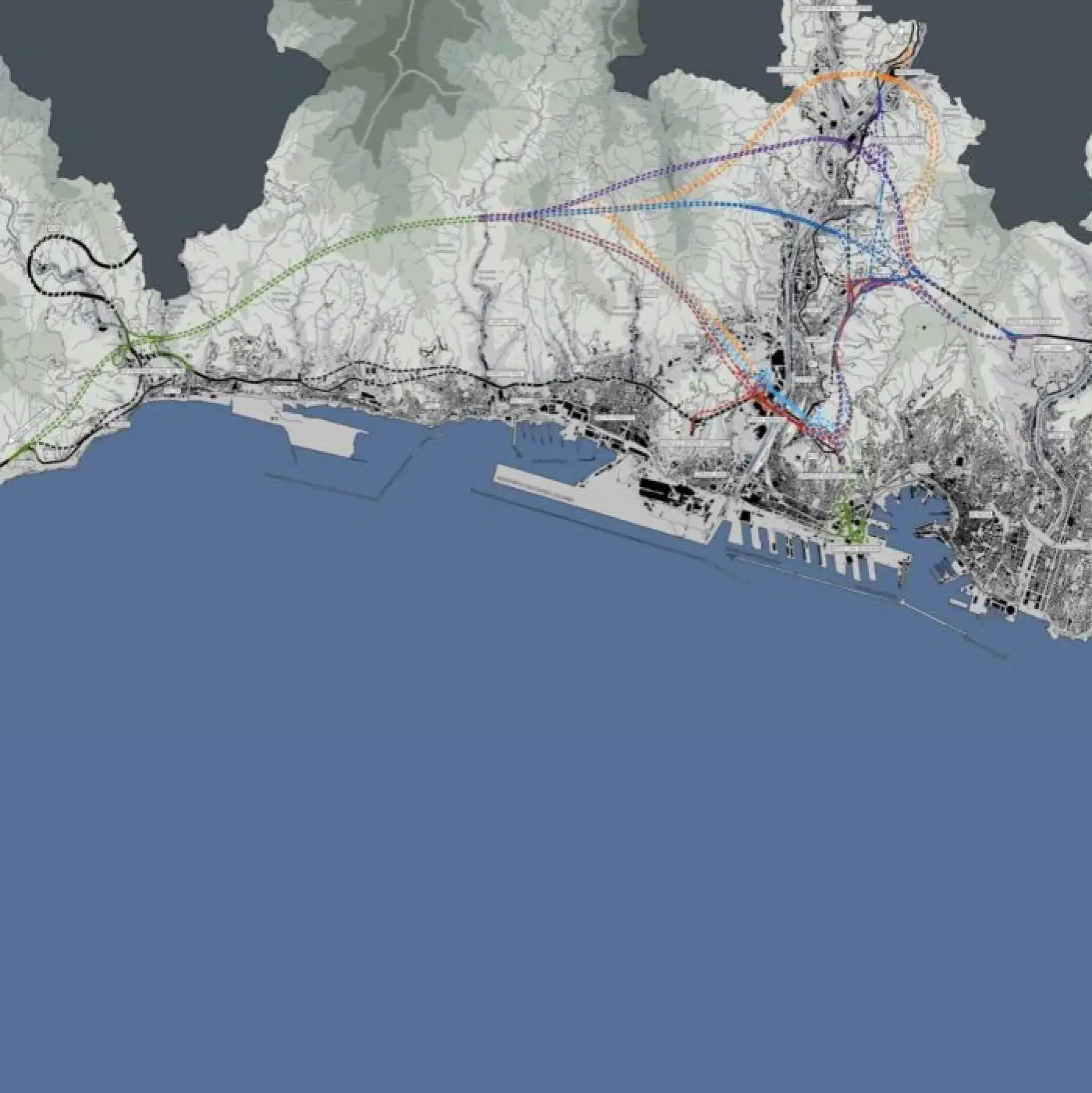
Gronda di Genova
The strengthening of the east-west connections at the Genoa junction and the building of an infrastructure then called the Voltri-Rivarolo slip road was considered for the first time.
First Feasibility Study which identified 4 alternative routes
The design of the route to cross the Val Polcevera riverbed at Bolzaneto was initiated.
Signature of a Memorandum of Understanding to set the guidelines for a different project alternative
The new "Gronda di Genova" project was completed, including a crossing at the height of the Morandi viaduct. Additionally, a new Memorandum of Understanding was drafted to define the design of the new A7 North in the GE Ovest/A12 section. Autostrade submitted the project to Anas and the Ministry of Infrastructure and Transport.
Autostrade forwarded the project to Anas, with no Environmental Impact Study due to the lack of agreement on the site where the excavated material for the tunnels was to be collected.
A Technical Working Group was set up by the Ministry of Infrastructure and Transport and the Ministry for Environment and Land and Sea Protection to identify the Calma Canal as the main site for the tunnel excavation material
Upon request of the Municipality of Genoa, a public debate to discuss the 5 alternative routes was activated: a new route was thus identified. It included a viaduct crossing the Polcevera river and a set of route optimisations
The Memorandum of Understanding
Prior Technical Validation of the Basic Design by the Ministry of Infrastructure and Transport
Environmental Impact Assessment Procedure and Decree
Conference of Services
Programme agreements for the Maritime Work
Submission of the basic design and integrated additions to the Ministry of Infrastructure and Transport
Decree of the Ministry of Infrastructure and Transport sanctioning the approval of the Basic Design and declaring the public utility of the work
The public debate
The Gronda di Genova project was thoroughly discussed with the local authorities and the citizens of Genoa. This included the adoption of the Public Debate model in 2009, during which the best design solution was chosen out of 5 different alternatives presented. After finalising the route and optimising the project based on the feedback from the Public Debate, the basic design and related approval process were initiated.


Crossing upstream of the confluence of the Secca and Polcevera Streams.
Crossing at the fruit and vegetable market.
Crossing at Begato, considerably oriented according to the Val Torbella
Crossing coinciding with the Design incorporated in the Protocol dated 26 February 2006 and delivered to the Grantor.
The stages of public debate
On 13 February 2009, the first of the 12 meetings scheduled for the February-April quarter was held. During the in-depth meetings, any citizen could submit their comments and proposals, which were then formalised in the 'Stakeholders’ Notebooks' that the SPEA Planners then analysed publicly.
At the end of the 4-month Debate - after 6 "Presentation Meetings", 7 "Thematic Meetings", 37 "Stakeholders' Notebooks" and more than 400 articles on the Debate, which appeared in the national and local press - a "Closing Meeting" was held to take stock of the shared aspects and divergences that emerged during the meetings and to select the route that the Territory considered to be the least impactful.
On 29 April 2009, the Public Debate officially ended. On 15 May 2009, the Commission that chaired the Debate published its report, within the agreed timeframe, highlighting the critical issues identified concerning the five routes submitted to the public.
Route number two (i.e. the one characterised by the viaduct crossing of the Polcevera Valley at the fruit and vegetable market and the Bolzaneto motorway station) was recognised as the best of the five routes examined, being the least impactful.
On 27 May 2010, the proposer Autostrade per l'Italia obtained the technical approval of the Grantor to present the chosen technical solution in a public session.
On 10 July 2009 the Optimised Project of Solution 2 was presented to local institutions. This project was based on the feedback received during the Public Debate and had already been presented on 29 May to the joint 3rd Urban Planning and 7th Infrastructure Council Committees of the Municipality of Genoa.







